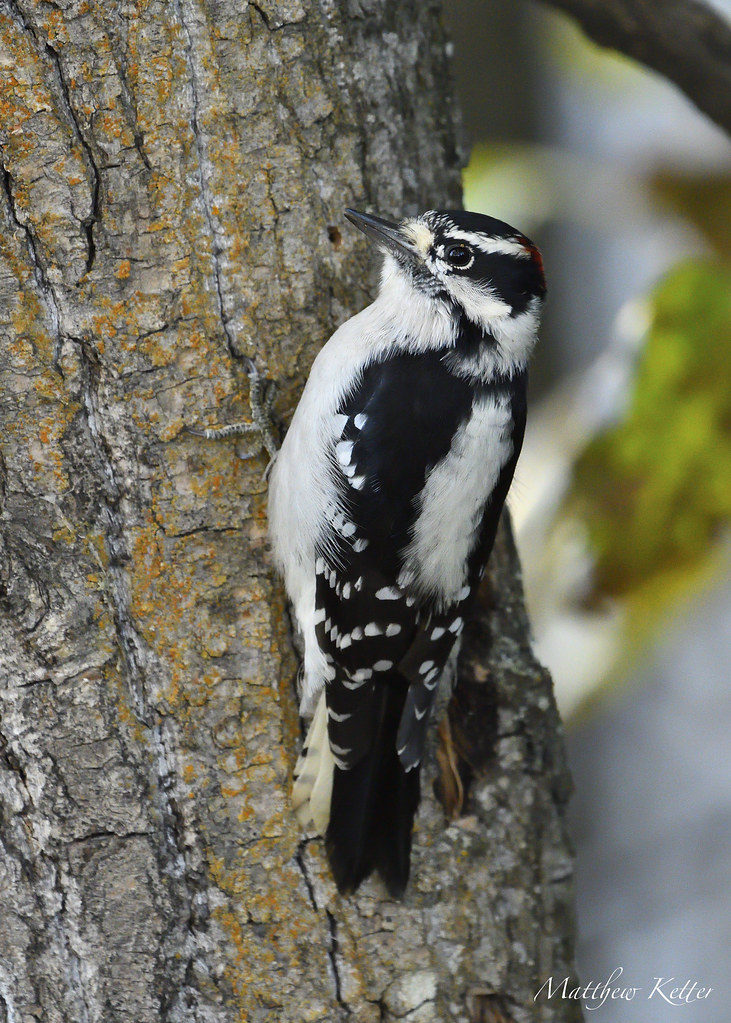Every Wednesday, a charming ritual takes flight in many backyards and woodlands, captivating the hearts of birdwatchers and casual admirers alike. This celebration of avian life has garnered the charming moniker, “What’s That Wednesday?” focused particularly on showcasing the alluring Downy Woodpecker. A diminutive and spirited creature, the Downy Woodpecker embodies the essence of resilience and adaptability. Its striking appearance and fascinating behaviors are not only visually intimidating but also serve as a reminder to ardent nature lovers of the beauty concealed in everyday environments.
The Downy Woodpecker (Picoides pubescens) is an emblematic representative of the woodpecker family, often soaring through the imaginations of those captivated by its artful antics. With a length of approximately six to seven inches, this petite bird is characterized by its bold black and white plumage, punctuated with a smattering of bright red atop the male’s head. Its diminutive size belies its tenacity and intelligence—traits that intrigue birdwatchers and researchers alike.
Residing predominantly across North America, the Downy Woodpecker is a year-round inhabitant in a variety of habitats. From the outskirts of urban neighborhoods to dense forests, it has successfully adapted to punctuate the landscape with its rhythmic drumming. Their drumming, a series of measured taps, serves a plethora of purposes: from communication and territorial claims to the excavation of food sources hidden within tree bark. These sightings often ignite curiosity among observers, prompting the need to understand their choices in nesting and feeding behaviors.
Downy Woodpeckers primarily feast upon a diverse diet consisting of insects, especially caterpillars, beetles, and their larvae, as well as seeds and berries. Their ability to scale trees with unparalleled agility equips them to uncover distinctive sources of nourishment, often leading to intricate foraging patterns that lend insight into their ecological roles. The specialized barbed tongue of these woodpeckers acts as a remarkable foraging tool, enabling them to extract insects residing deep within crevices.
Now, let’s delve deeper into their breeding behavior, a captivating aspect filled with grace and ceremony. During the breeding season, the male vigorously drums on potential nesting sites, and his persistent efforts are often met with an equally enthusiastic response from a receptive female. After a courtship possibly marked by display flights and mutual drumming, the pair selects a decayed tree or a sturdy limb to excavate a nesting cavity. This cooperative endeavor showcases the diligence and dedication of both partners, as they work to create a safe haven for their future brood. It’s a spectacle of nature—a reminder of life’s delicate balance and intricate connectivity.
Once eggs are laid and incubated, the parents engage in an elaborate feeding routine to nourish their hatchlings. For about two weeks, the fledglings remain nestled within the confines of their arboreal abode, relying exclusively on their parents for sustenance. Eager yet vulnerable, these young birds eventually take their first, tentative flights—their introduction to the vast expanse of the world outside. As their wings gain strength and confidence, they embody hope and the perpetual cycle of life, appealing to the emotions of those fortunate enough to witness such an event.
The Downy Woodpecker’s demographics show a remarkable adaptability to the fluctuating climate patterns and habitat alterations brought about by urbanization. However, defining its future remains a pressing concern amid habitat destruction and changing ecological dynamics. It prompts a need for vigilance among conservationists and enthusiasts alike, ensuring that this vibrant bird remains a staple in our landscapes.
For those keen to observe the Downy Woodpecker in its natural element, providing a welcoming environment can amplify the likelihood of encounters. Incorporating bird feeders stocked with suet or black oil sunflower seeds can attract these agile birds. In addition, maintaining patches of native trees and shrubs serves not only as a food source but also as a vital habitat for these and other avian species.
In recent years, the Downy Woodpecker has become somewhat of a community icon, especially on social media platforms where enthusiasts share their encounters and experiences. This uplifting trend fosters camaraderie and instills a sense of belonging among nature lovers, reinforcing the notion that fostering an appreciation for biodiversity can unify us. Each shared photo, video, or story enhances our understanding of these magical creatures and the environments they inhabit.
In conclusion, the Downy Woodpecker is not just a bird of exquisite charm; it is a testament to the resilience of nature itself. It stands as an inspiration for those aspiring to connect with and understand the intricate nuances of wildlife. Every Wednesday, as we celebrate “What’s That Wednesday?”, let us recognize the magic that lies in our backyards, in the trees overhead, and in the small, persistent creatures that ignite our passion for the natural world. The Downy Woodpecker, with its vibrant spirit, encourages us to watch, learn, and cultivate a deeper appreciation for the animated lives that coexist with us every day.









Leave a Comment